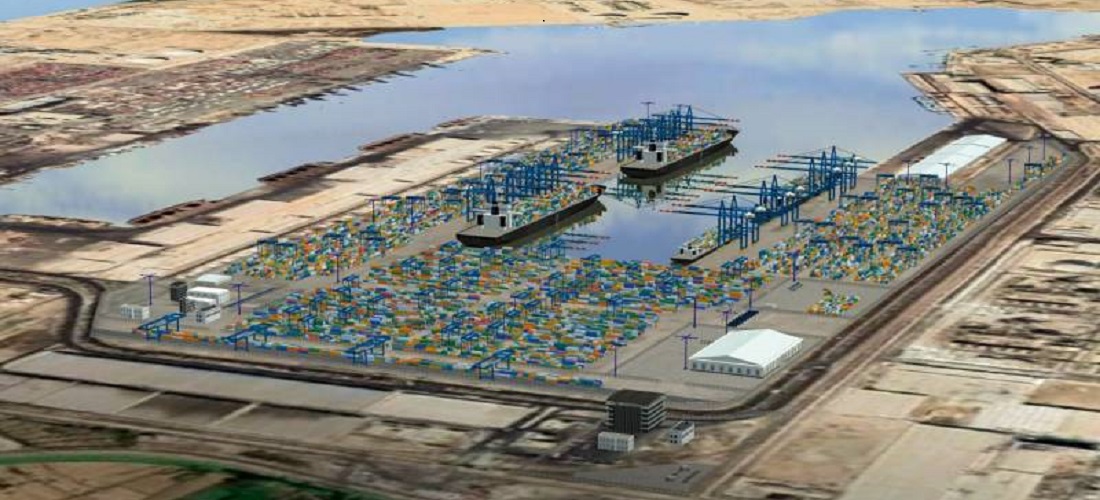
Hapag-Lloyd: New hub in the eastern Mediterranean
Jan, 11, 2023 Posted by Gabriel MalheirosWeek 202302
A state-of-the-art transshipment terminal with an annual handling capacity of 3.3 million TEU is being built in Damietta, Egypt. From the second half of 2024, the terminal will give Hapag-Lloyd advantages – while also benefiting its customers and Egypt, too.
The site, which covers an area equivalent to 130 football pitches, still looks more like a moonscape. The first foundations are protruding from the ground here and there, earthmovers are criss-crossing the area, and a floating dredger is tirelessly pumping soil out of an adjacent basin, where a port basin is being excavated. Plans call for building a state-of-the-art container terminal in Egypt’s Port of Damietta by second half 2024 and ramping up operation until 2025.
The joint venture Damietta Alliance Container Terminal S.A.E. was launched to develop and operate the new Terminal 2. Its three main shareholders are Hapag-Lloyd Damietta GmbH, with a 39 per cent stake, as well as Eurogate Damietta GmbH and Contship Damietta Srl, each with a 29.5 per cent stake. Two local partners, the Middle East Logistics & Consultants Group and Ship & C.R.E.W. Egypt S.A.E., each hold a one per cent stake.
The new location is of great strategic importance. To date, Hapag-Lloyd’s transshipment operation in the Eastern Mediterranean is spread between different ports including Greece’s Port of Piraeus and the current Damietta terminal CT1. But the new terminal will eventually give Hapag-Lloyd the option to concentrate its transshipments business in Damietta and thereby improve its competitive situation in its favour. The terminal’s location roughly 60 kilometres from the northern outlet of the Suez Canal is a key advantage.
“All ships sailing between Europe and Asia as well as important destinations in the Middle East and the Indian Subcontinent pass through Damietta almost automatically without having to deviate from their route,” says Matthias Müller, Senior Director Business Administration Region South Europe, Genoa. Another advantage is the water depth of 18 metres compared to the current 14 metres found at Terminal 1, which means that the new terminal will be able to handle ships of all sizes, including the 23,500+ TEU dual-fuel ships, that Hapag-Lloyd has ordered.
The terminal will be equipped with 50 state-of-the-art rubber-tyred gantry cranes (RTGs), half of which will be powered by electricity, as well as 16 ship-to-shore cranes (STSs).
-
Ports and Terminals
Aug, 03, 2021
0
Silo collapse paralyzes operations at Argentine Bunge facility
-
Ports and Terminals
Jul, 30, 2019
0
Government signs contracts for Private Use of Terminals
-
Ports and Terminals
Aug, 16, 2022
0
Imbituba sees 2nd best monthly throughput for July: 700K tonnes
-
Ports and Terminals
May, 31, 2019
0
Argentina to invest US$100m to avoid freight train from passing through Santa Fé city


